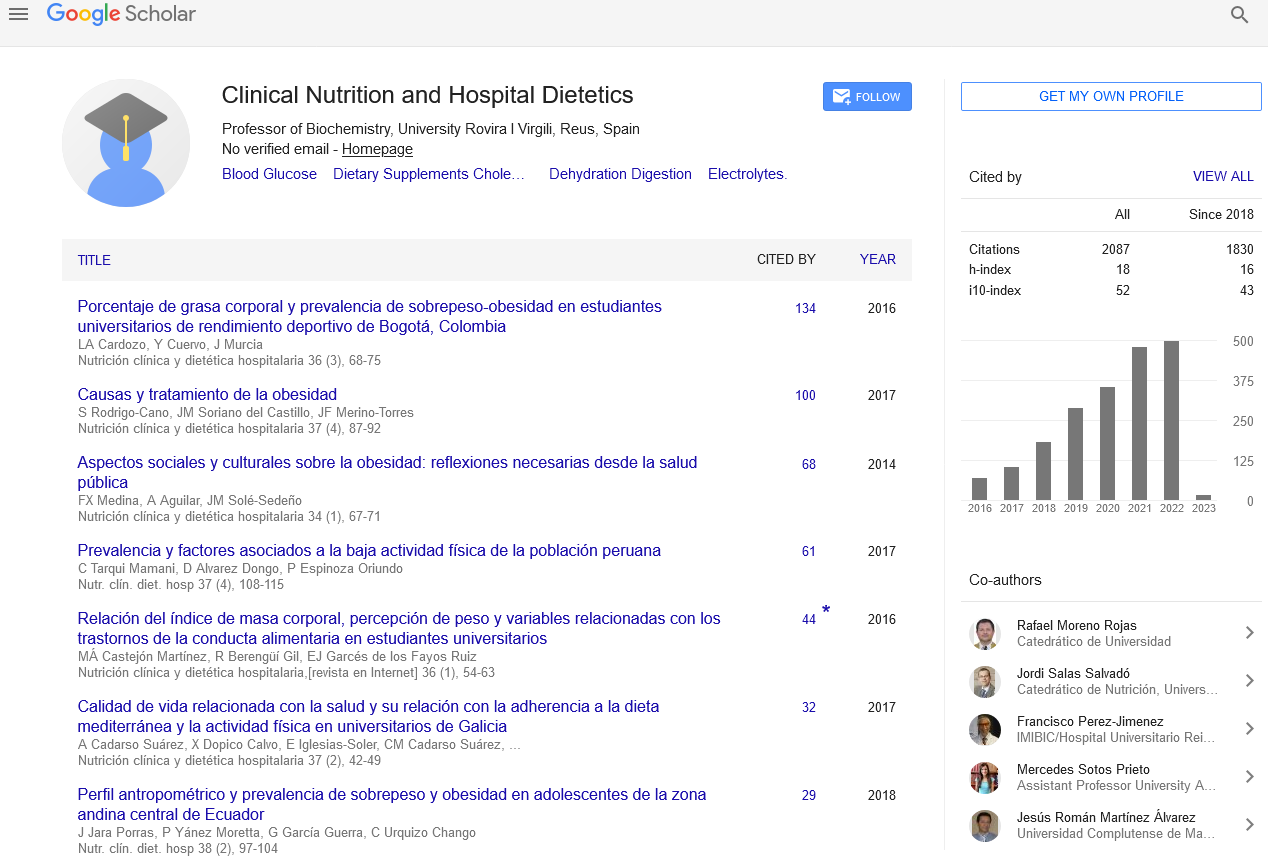Abstract
Influence of breakfast on overweight and obesity in child and adolescent population from Madrid
Author(s): DÃÂez-Navarro, Andrea1,2; MartÃÂn-Camargo, Ana1; Solé-Llussà, Anna1; González-Montero de Espinosa, Marisa2,3; Marrodán, MarÃÂa Dolores1,2
Introduction: In the last years, the percentage of overweight and obese children and teenagers has increased among the Spanish population. This fact is closely associated with the acquisition of new alimentary habits.
Aims: The primary aim of this study was to determine the Body Mass Index (BMI) in a group of schoolchildren and to compare the results to those of similar studies. Also, an association between both having break fast and the quality of this meal, and the nutritional status of the children was investigated.
Methods: This study comprises a sample of 986 school boys and schoolgirls who lived in Madrid and were aged 9 to 15 years old. Several anthropometric measures were taken in these children, including height and weight, which were used to calculate their BMI. The percentage of subjects from each category was established following the criteria of the International Obesity Task Force (IOTF). The results were compared with other Spanish studies. Also, the feeding behavior of children and teens was determined from the Kidmed test. Presence or absence of breakfast was related to nutritional condition and comparisons were assessed by chi-square test.
Results: The results of this study reveal that the percentage of overweight children (22,9%) is higher than that of obese children (5,8%), and that both measures are higher in boys (31,5%) compared to girls (26,4%). On the other hand 7,5 % of girls do not have breakfast daily, whereas 4,9% of boys have this habit. Also, the results indicate that the habit of breakfasting is associated with higher values of low and normal weight, and this association is statistically significant in the age group including children 11 to 13 years old, and more specifically among girls these ages. Finally, the study shows that taking dairy products as part of breakfast is related to a lower prevalence of obesity at all ages analyzed, however, no significant relationship was found between having cereals at breakfast and a lower BMI.
Discussion: There is general agreement with other studies in various aspects: the percentage of overweight subjects exceeds that of obese subjects; the older the schoolchildren are, the higher is the percentage of them who skip breakfast and there is a link between diet quality and lower BMI. In the same way, similar results are obtained about the relationship between the consumption of milk at breakfast and excessive weight, although not significant. However, there is no such asociation in the case of cereals. Instead, data is somewhat disparate with other works, if is differentiated by sex, regarding a surplus of weight or the percentage of those who do not eat breakfast.
Conclusions: There are more overweight schoolchildren than obese schoolchildren. Excessive weight is more frequent in males. The percentage of girls who dispenses with the first daily meal is lower than that of boys. BMI decreases in subjects who eat breakfast. The habit of skipping breakfast increases with age. Ingestion of milk at breakfast is linked to a higher percentage of underweight or normal weight, a fact that does not occur in the case of cereals. Most students pursuing high quality diet have no surplus weight.
Google Scholar citation report
Citations : 2439
Clinical Nutrition and Hospital Dietetics received 2439 citations as per google scholar report
Indexed In
- Google Scholar
- Open J Gate
- Genamics JournalSeek
- Academic Keys
- JournalTOCs
- ResearchBible
- SCOPUS
- Ulrich's Periodicals Directory
- Access to Global Online Research in Agriculture (AGORA)
- Electronic Journals Library
- RefSeek
- Hamdard University
- EBSCO A-Z
- OCLC- WorldCat
- SWB online catalog
- Virtual Library of Biology (vifabio)
- Publons
- MIAR
- Geneva Foundation for Medical Education and Research
- Euro Pub
- Web of Science
Journal Highlights
- Blood Glucose
- Dietary Supplements
- Cholesterol, Dehydration
- Digestion
- Electrolytes
- Clinical Nutrition Studies
- energy balance
- Diet quality
- Clinical Nutrition and Hospital Dietetics




